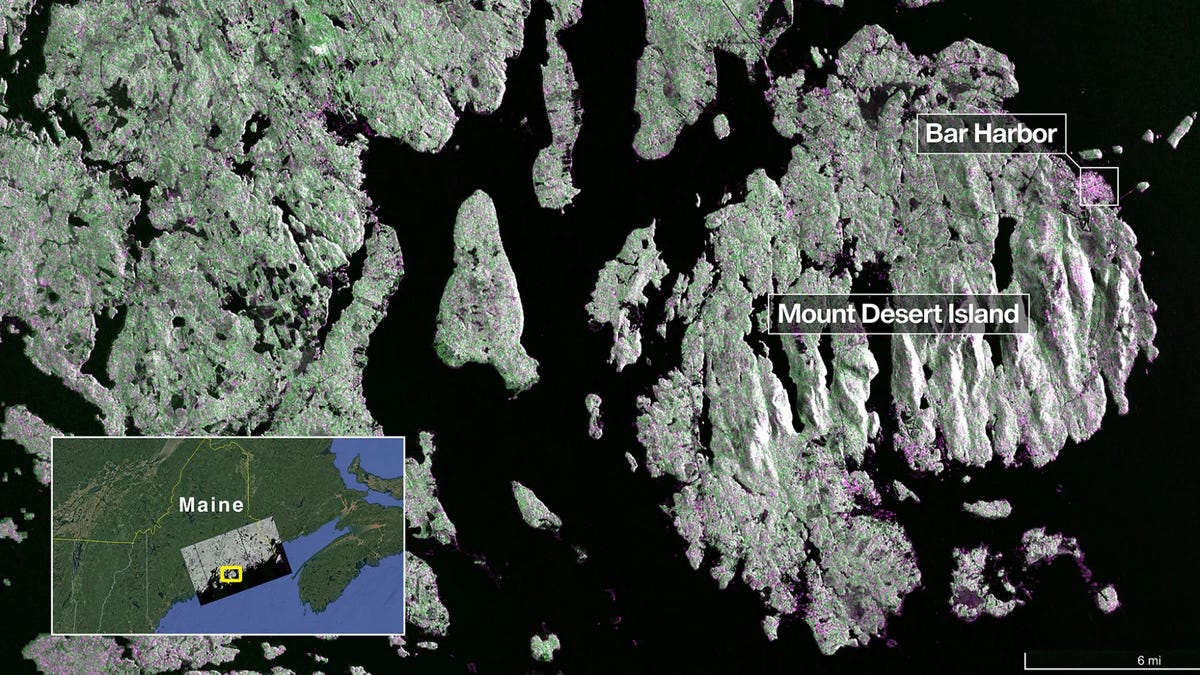The two radar images, captured in August by the NISAR satellite, detail portions of both Maine’s coast and North Dakota.
An Earth-observing radar satellite launched jointly between the U.S. and India has returned its first images of our planet’s surface.
The two radar images, captured in August by the satellite launched into orbit as part of the NISAR mission, detail portions of both Maine’s coast and North Dakota. In a late-September press release, NASA said the photos serve as a glimpse of just what the advanced observatory will be able to capture from space as it prepares to begin its full science operation later in 2025.
“NISAR’s first images are a testament to what can be achieved when we unite around a shared vision of innovation and discovery,” acting NASA Administrator Sean Duffy said in a statement.
Here’s what to know about the NISAR mission and its first radar images.
What is NASA’s NISAR mission with India?
The NISAR mission is a joint venture between NASA and the Indian Space Research Organization (ISRO.) In fact, the two space agencies are included in the NISAR acronym, which stands for NASA-ISRO Synthetic Aperture Radar.
The satellite, which launched July 30 from India, is designed to observe and map Earth in incredible detail to provide scientists with measurements of some of the planet’s most complex processes – including disturbances to the ecosystem, collapses of ice sheets, rising sea levels and other natural disasters.
The goal? Provide data that will help people like scientists, farmers and emergency responders make decisions about things like agricultural management and infrastructure, or form a disaster response plan.
See 1st radar images of Earth returned by NISAR satellite
The NISAR satellite snapped its first image Aug. 21 using an instrument known as the L-band synthetic aperture radar (SAR) system. Provided by NASA’s Jet Propulsion Laboratory in Southern California, the L-band radar system uses a 10-inch wavelength with a signal that can capture objects as small as 15 feet.
That initial image depicts the Mount Desert Island off the north-central coast of Maine.
Dark areas represent water, while green areas indicate forests. Some spots in the image are also magenta, which indicate surfaces that are either hard bare ground or buildings.
The next image was captured Aug. 23 using the same L-band tool to survey a portion of northeastern North Dakota.
The area in question straddles Grand Forks and Walsh counties, detailing forests and wetlands on the banks of the Forest River that passes through the center of the frame. To the north and south of the river is farmland, with dark spots indicating fallow fields and lighter colors representing pastures or crops.
The NISAR mission also includes an S-band radar, provided by ISRO, that uses a 4-inch microwave signal to observe small vegetation.
What’s next for NISAR mission?
The debut images come after the NISAR satellite was raised to its operational 464-mile-high orbit in mid-September as it prepares to officially begin its science phase in November.
Once fully opearational, the satellite is intended to monitor Earth’s land and ice surfaces twice every 12 days, collecting data using the spacecraft’s 39-foot-wide drum-shaped antenna reflector.
“This is only the beginning,” Duffy continued in his statement. “NASA will continue to build upon the incredible scientific advancements of the past and present as we pursue our goal to maintain our nation’s space dominance through Gold Standard Science.”
Eric Lagatta is the Space Connect reporter for the USA TODAY Network. Reach him at elagatta@gannett.com
